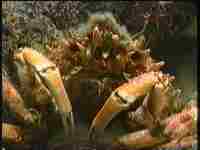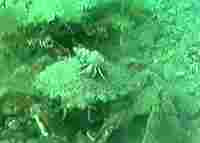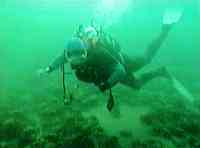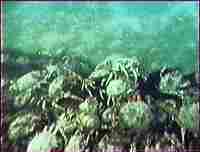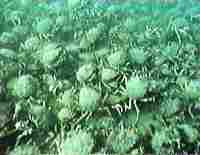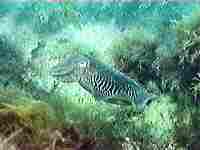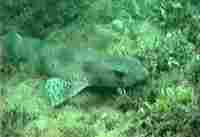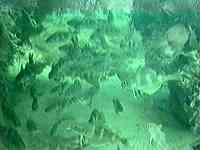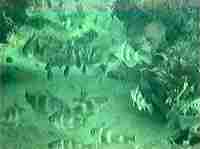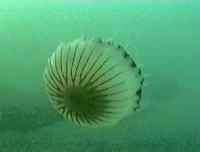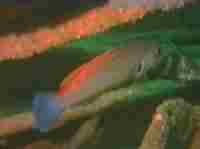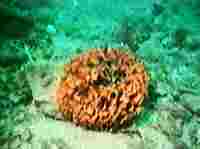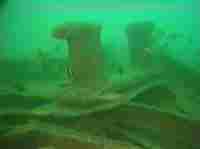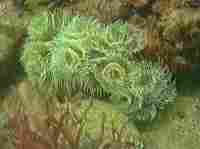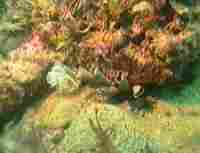Spider Crabs |
|||
|
Spider crabs are common in Lyme
Bay and caught by fisherman for export. For some reason they are not popular
to eat in the UK (Perhaps because they look so fierce!). When they mate
they gather in vast numbers off the coast forming a dense covering over
large areas of the sea floor. This short
movie clip gives some idea of what its like to see this unique occurrence
just off Burton beach.
|
|||
|
We are very grateful for material supplied by Chris
Duggan and Richard Edmonds
|
|||
|
A Hermit Crab on top of a Spider Crab
|
|||
|
Diver over Spider Crab gathering
|
|||
|
Spider Crabs. The bulk of the crabs that collect together are female and are much
smaller |
|||
|
Spider Crabs
|
|||
|
Other movie shots and stills show
some of the other undersea life off the beach and in Lyme Bay.
|
|||
|
Another Cuttle Fish movie showing the animal hunting among the rocks and weed. |
|||
|
Dogfish
|
|||
|
A small shoal of immature Pout Whiting. The shallow
reefs are a haven for young fish during the summer months
|
|||
|
Another view of the Pout Whiting
|
|||
|
A large Compass jelly fish which are not often encountered
along the coast
|
|||
|
A male cuckoo wrasse on the wreck of the Baygitano, towards
Lyme Regis. Cuckoo wrasse start their lives as females and then the more
dominant ones gradually change into males, developing the most
fabulous blue, red and orange colouration. The females are red/pink
|
|||
|
Ross Coral which grows on the deeper ledges (20 m plus)
across Lyme Bay. It is not a coral at all but a colonial bryozoan.........lots
of little coral like animals that build up a complex growth that resembles
cornflakes all fused together!
|
|||
|
The wreck of the Baygitano near Lyme Regis. This was a
cargo ship that was torpedoed in the First World War and is now a haven
for wildlife. Depth 20 m.
|
|||
|
Tubeworms. These live in hard tubes and can withdraw their
feeding tentacles quickly at the first sign of approaching danger.
|
|||
|
Tubeworms with their tentacles withdrawn as a small fish
goes by.
|
|||
Return to "Diving off Hive Beach"
Tim Linford
